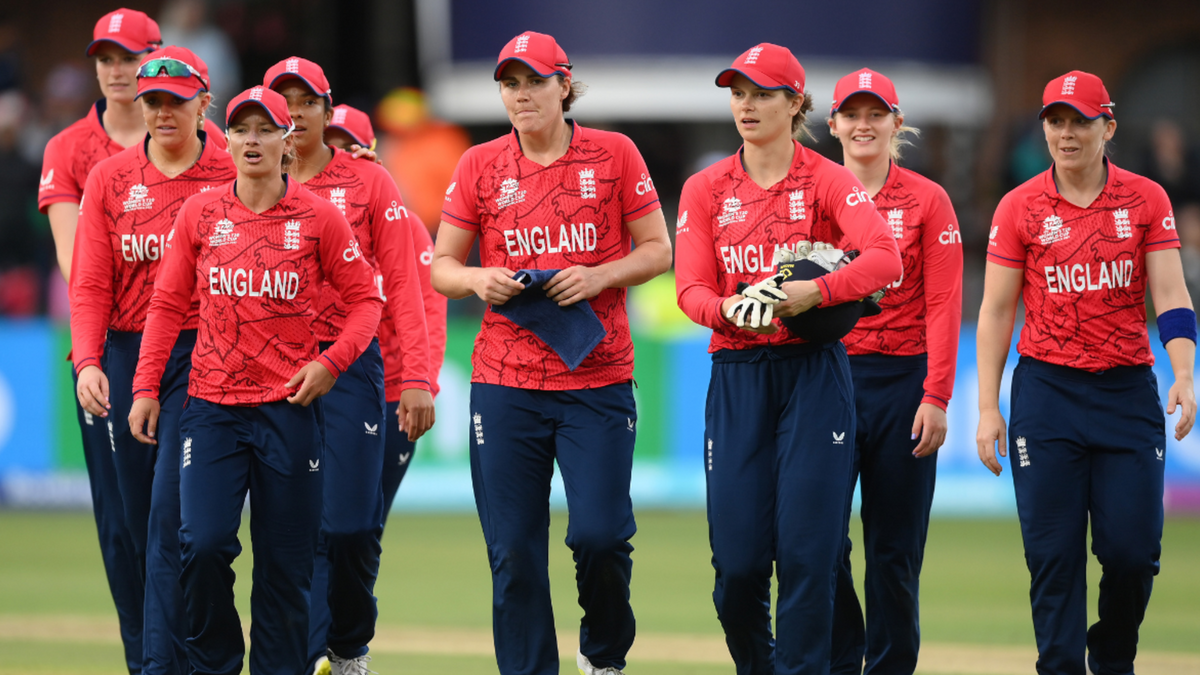
England’s ultra-aggression with the bat has given them the momentum they needed to reach the semifinals, writes Katya Witney. But to win the World Cup, their bowlers will need to match that energy.
Against Pakistan in Cape Town, England’s batters put down a marker. After three dot balls, Danni Wyatt started their brutalisation of Pakistan’s attack, hitting consecutive boundaries off Sadia Iqbal. They were the first of the 29 that were scored over the course of England’s innings.
Even after Sophia Dunkley and Alice Capsey were out early, England kept going, bringing up their hundred in the 11th over. Nat Sciver-Brunt added to her tally of exceptional innings in ICC tournaments with an unbeaten 81, striking at over 200 and scoring 13 boundaries.
The demolition was a continuation of the approach England have taken with the bat throughout the tournament, which has come three months into Jon Lewis’s tenure as head coach. Whereas in their three previous group games they hadn’t quite managed to get the correct balance between intent and over-aggression, their display against Pakistan was a near-complete performance.
England scored the most runs of any team in the group stages of the tournament, and on average scored their runs at 8.84 per over – Australia’s group stage run rate, the next fastest was 7.38. Scaling that up, Australia scored 29 runs fewer per 20 over innings than England.
In the history of the Women’s T20 World Cup, no team has scored at more than 8 runs per over with the bat. In the last tournament in 2020, Australia won the trophy having averaged 7.52 – England’s campaign ended in the semifinal with a similar run rate per over (7.50).
Their significant uptick in scoring this time round can be explained, in part, by two factors. The first is the depth of the batting order they have been able to field with their wealth of bowling all-rounders, and the second is the pitches they’ve played on. Their record-breaking total against Pakistan played out at Newlands, which has hosted three out of the top four highest scores at the tournament so far. Of their other three group stage fixtures, the first two were played in Paarl where they comfortably overcame the West Indies and got over the line against Ireland. Both times they chased down their targets inside 15 overs, against Ireland they did this despite losing six wickets.
England nearly came unstuck was against India in Gqeberha, where Renuka Singh Thakur’s pace was particularly effective. They slipped to 29-3 before relying on their experienced heads of Nat Sciver-Brunt and Amy Jones to post a workable 151-7. Notably, the highest score posted at Gqeberha for the whole tournament was India’s 155-6 against Ireland. With the entirety of the knockout stages being played in Cape Town, albeit on pitches which are wearing after heavy use in the group stage, England have perhaps dodged a bullet with the surfaces they have batted on.
Renuka has been one of the best seam bowlers in the tournament. In that match against England, she was accurate and found in-swing to trouble England’s top order. Along with Leah Tahuhu and Megan Schutt, they have formed a small group of fast bowlers who have managed to succeed on surfaces that have increasingly favoured spinners. In this regard, England’s pacers have not managed to reflect the impetus their batters have injected.
In every one of their group stage matches, England fielded a three-spin attack. Sophie Ecclestone, as ever, has been the standout bowler of the tournament – she is the joint leading wicket-taker at the time of writing and her economy rate is a ridiculous 3.81. Sarah Glenn has been predictably excellent and Charlie Dean’s contributions have given England arguably the most impressive spin attack in the competition in terms of depth.
And yet, as a team they conceded more runs than India, Australia and South Africa in the group stages, at a higher scoring rate per over than the latter two. Katherine Sciver-Brunt in particular has struggled, and has looked far from the force England are accustomed to. She has the highest economy rate (7.00) of any England seamer in the tournament, and before the victory over Pakistan had taken two wickets in her first three games. Against Pakistan she was back as the fiery and threatening presence England needed. She took a wicket from the second ball of the innings and conceded just 14 runs from her four overs. The caveat is that England already had 213 on the scoreboard.
While Lauren Bell has found swing for England in the powerplay as Sciver-Brunt’s pace specialist partner in the attack, she struggled for the powerplay consistency England will need if they are to limit Australia’s batting Goliaths (should they qualify for the final) in the wins over West Indies and Ireland.
If England reach the final, it will also be presumed that Australia will outpower them, just as they have done countless times before. This time, England have the ability and the confidence to match them pound for pound with the bat. It’s with the ball where they may find themselves falling short.








